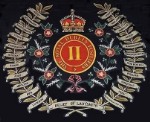Ettore Schmitz (Italo Svevo)
Aron Hector "Ettore" Schmitz was a Triestine author, journalist, and businessman who while working in a bank married into a family of industrialists. He wrote under the pen name of Italo Svevo. In 1907, Schmitz engaged Joyce as an English tutor and the two became friends. They frequently discussed literature and their respective writings, and the relationship lasted until Schmitz's death in 1928. Schmitz was the primary model for the Ulysses character Leopold Bloom.
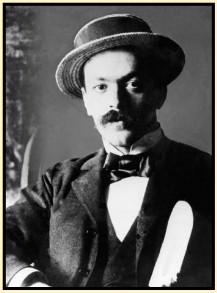
U.S. Publisher's Biography
"Italo Svevo, whose real name was Ettore Schmitz, was born in Trieste in 1861. He was educated in Trieste and in a commercial school in Germany and returned to his birthplace to begin a business career that he pursued successfully until his death. He published three novels (at his own expense): Una vita (1892; English translation: A Life), Senilita (1898; English translation: Emilio's Carnival; also translated under the title As a Man Grows Older), and La coscienza di Zeno (1923; English translation: Zeno's Conscience; also translated under the title Confessions of Zeno). After his first two novels were ignored, Svevo considered giving up writing and devoting himself full-time to business. Aiming to improve his English, he fell under the tutelage of James Joyce, twenty years his junior. Svevo read early portions of Dubliners, and Joyce read Svevo's two novels and encouraged him to take up writing again. When Svevo completed Zeno's Conscience, Joyce arranged to have it published in France, where Svevo was dubbed "the Italian Proust." He soon emerged from obscurity in Italy, and his rank as a major writer was already established when he died in a car accident in 1928."
Early Life and Family
Svevo was born in Trieste into a middle-class family. He was one of seven children who survived early childhood. At the time, Trieste was an imperial city of the Austro-Hungarian Empire (the "Dual Monarchy") and not part of either the Kingdom of Austria or the Kingdom of Hungary. Under Imperial law, his mother was an Italian national while his father was Austrian. Both parents were observant Jews. He received his primary education at a local Hebrew school and secondary education at the Brusselsches Institute, a secular boarding school in Segnitz am Main, Germany. At age 17, Svevo returned to Trieste and entered the Scuola Superiore di Commercio Revoltella, a business college. After two years of study, young Svevo obtained employment at the Trieste branch of the Union-Bank of Vienna. He remained with the bank until age 38.
n/ Both James and Stanislaus Joyce would later teach at the Scuola Superiore di Commercio. James was employed there from October 1913 through June 1915. Stanislaus taught there 1920-1941 and 1945-1955. In 1924, the school became the first academic component of the new University of Trieste.
While in Germany at the Brusselsches Institute, Svevo developed an interest in literature and philosophy. He also abandoned his religion and became a life-long atheist. In 1895, after the death of his father, Svevo changed his religion of record at the Municipal Register's Office from mosaica to "no religious denomination." His will specifically forbids a religious funeral and bans participation by any clergy.
As a young man, Svevo led a solitary life. He lived with his family, worked at the bank, and beginning in 1893, taught evening classes at the Scuola Superiore. Svevo spent his free time reading and writing. Like James Joyce, he occasionally made use of prostitutes. Also like Joyce, he had some critical essays published by local newspapers.
Svevo's paternal ancestry can be traced back to Copsa Mica, Romania, which at the time was in the Kingdom of Hungary. Some of the Schmitz's emigrated to the Rhineland area of Germany and Svevo's paternal grandfather left there for Trieste. Svevo's maternal ancestors were Sephardic Jews who settled in Italy after expulsion from Spain. His maternal grandfather came to Trieste from northeastern Italy.
n/ Brian Moloney, Friends in Exile: Italo Svevo & James Joyce (Kilsworth, UK: Troubador, 2018), 1-17, 110-11.
Truncated Family Tree

In 1895, Svevo married Livia Veneziani, his first cousin, once removed. Her mother was Olga Moravia, only child of Giuseppe Isacco Moravia and Anna "Fanny" Wolf. Fanny was Austrian and a devout Catholic; Giuseppe had changed his religion to marry her. Olga, like her mother, was religious and married Gioachino Veneziani, a Catholic Austrian whose father was Jewish. Accordingly, Livia, a practicing Catholic like her mother, had two grandparents who were at one time observant Jews.
n/ Moloney, Friends in Exile; genealogical websites Geni and Genanet.
Man of Business
The Veneziani's were rich; the family fortune having been made by Giuseppe Moravia in the mid-nineteenth century. Moravia invented an anti-fouling compound that could be added to marine paint then applied to a ship's hull. This special "submarine" paint retarded the accumulation of algae, barnacles, etc. and ships treated with Moravia's product required less frequent hull scraping than did untreated ships. Moravia built a factory on the outskirts of Trieste in Chiarbola Superiore (Upper Chiarbola) and named his firm "Moravia Paints." It's principal customers were the Austro-Hungarian Navy and ships of the Lloyd's Line that were serviced at its dockyard in Trieste.
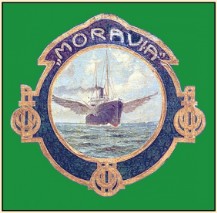
Moravia Paints Logo
In 1885, on the death of Giuseppe Moravia, his only child Olga inherited Moravia Paints and acquired control of the secret formula. She incorporated the firm, made her husband Gioachino minority shareholder, and continued the business as "Gioachino Veneziani, S.A." Olga appointed herself chief executive officer and in such capacity expanded the firm. She opened a factory on the island of Murano (near Venice) to obtain Italian customers and increased the Trieste works' production capacity.
Trade Advertisement and Business Directory Entry, c.1900
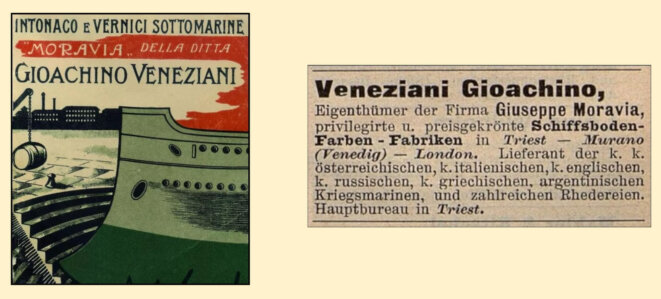
In 1900 or 1901, the Royal Navy contacted the Moravia firm and expressed strong interest in their hull coating. Olga sent her son-in-law Svevo to London to deal with the Admiralty. There was little to negotiate as officials of the Admiralty had already decided to use the Moravia product. Olga appointed Svevo the company's UK manager and with the assistance of Christo Tchaperoff, a Bulgarian engineer known to Svevo's wife, established a Veneziani paint factory in Charlton, Greater London, near Greenwich. The factory commenced operation in 1903.
n/ Website of the Museo Sveviano, Trieste. Tchaperoff took up residence in the London suburb of Lewisham and in 1915 received British nationality. Kelly's Post Office Directory, London, 1914; London Gazette, August 6, 1915.In 1963, the Frateschi family, real estate investors resident in Monaco, purchased Moravia Paints and relocated its production facility to Istanbul, Turkey. In 1974, the Frateschis sold the Turkish facility to local investors. The company founded by Giuseppe Moravia is now the Turkish firm Moravia Marine Coatings. Websites of Moravia Marine Coatings, Istanbul (www.moravia.com.tr) and the Moravia Group, Monaco (www.moraviagroup.com)
Svevo, now with extensive dealings in London, had to improve his English language proficiency.
Charlton, London Factory
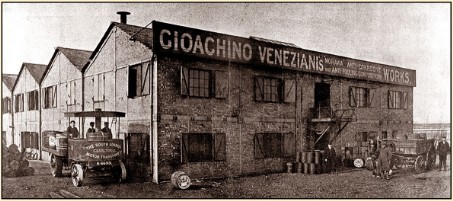
Location West of Woolwich Arsenal
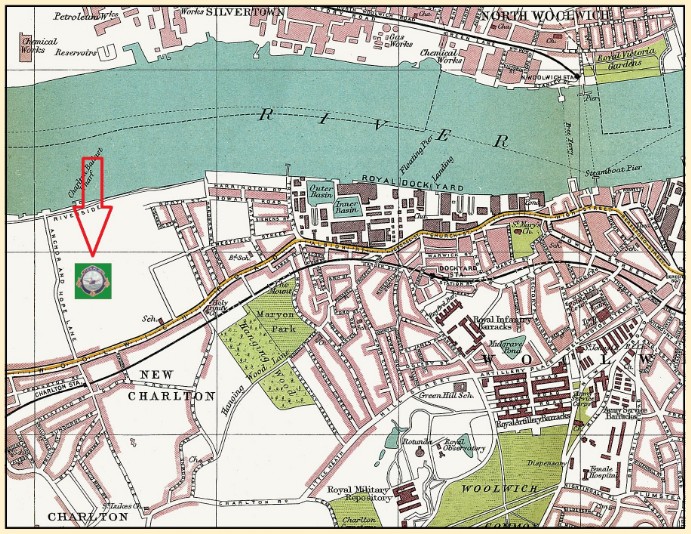
Bartholomew's Handy Reference Atlas of London & Suburbs, 1908.
Joyce and Svevo
In 1907, Svevo and his wife became private students of James Joyce. They received English lessons three times a week at the offices of the Upper Chiarbola paint factory. Within a year, Svevo told Joyce that he had two books published, Una Vita and Senilita, which were commercial failures. He gave Joyce copies of both.
Early in the relationship between the two, Joyce asked Svevo to write a description of him as one of his assignments. This is what Svevo wrote:
"When I see him walking on the streets I always think that he is enjoying a leisure a full leisure. Nobody is awaiting him and he does not want to reach an aim or to meet anybody. No! He walks in order to be left to himself. He does also not walk for health. He walks because he is not stopped by anything. I imagine that if he would find his way barred by a high and big wall he would not be shocked at the least. He would change direction and if the new direction would also prove not to be clear he would change it again and walk on his hands shaken only by the natural movement of the whole body, his legs working without any effort to lengthen or to fasten [quicken] his steps. No! His step is really his and of nobody else and cannot be lengthened or made faster. His whole body in quiet is that of a sportsman. If moved [that is, in movement] that of a child weakened by the great love of his parents. I know that life has not been a parent of that kind for him. It could have been worst and all the same Mr. James Joyce would have kept his appearance of a man who considers things as points breaking the light for his amusement. He wears glasses and really he uses them without interruption from the early (?) morning until late in the night when he wakes up. Perhaps he may see less than it is to suppose from his appearance but he looks like a being who moves in order to see. Surely he cannot fight and does not want to. He is going through life hoping not to meet bad men. I wish him heartily not to meet them."
n/ Richard Ellmann, James Joyce rev. ed. (New York: Oxford Univ. Press, 1982), 271-73.
Joyce was impressed by Svevo's writing and encouraged him to resume his literary efforts. Soon, Joyce was a regular guest at the Veneziani family home, Villa Veneziana. The estate was just one stop on the No.2 Tram Line past the Veneziani's factory, which Joyce rode. Though the relationship between the two was friendly, it was always formal in that Joyce only visited the Villa as a teacher. Nora Barnacle, at the time Joyce's common-law wife, always believed that Svevo's wife had snubbed her.
n/ Ellmann, James Joyce, 636
Villa Veneziani and No. 2 Tram Line

1896-98 Military Survey, New York Public Library
In January 1914, Svevo had the Veneziani firm hire Joyce as a part-time correspondence clerk, a position like the one Joyce had held in a Roman bank, July 1906 through February 1907. The pay was 100 crowns per month which at the then in effect exchange rate was equivalent to £4 3s. 4d. Joyce, always in need of money, kept the job until he left Trieste for Switzerland in June 1915.
n/ Ellmann, James Joyce, 380-81, 386; The Times, January 15, 1914.
After Joyce left Trieste for Switzerland, he maintained correspondence with Svevo. In 1923, Svevo's next work, the novel La coscienza di Zeno (The Conscience of Zeno) was published. He sent Joyce, then in Paris, a copy. Joyce was enthusiastic about the book and told Svevo to send copies to several noted men of letters and to use Joyce's name. Joyce successfully promoted Svevo who gained recognition as an important, European writer. From 1924 through 1928, Svevo and Joyce met frequently in Paris.
n/ Ellmann, James Joyce, 559-61.
In Milan in 1927, Svevo read a paper on Joyce which was subsequently translated into English by Stanislaus Joyce, James' brother. The translation was published in 1972 by City Lights Books, San Francisco, as James Joyce by Italo Svevo. City Lights Publishing and Bookstore was co-founded by the noted beat poet, Lawrence Ferlinghetti in 1953. In his lecture, Svevo said of Joyce:
"Everybody who knows Joyce knows that the Joyce who washes himself every day is not Stephen Dedalus, the unwashed bard, who thinks when he sees others washing and scratching themselves: 'They are trying to get at their consciences.' Dedalus is loose-spoken, while Joyce one day called me to task because I allowed myself to make a rather free joke. 'I never say that kind of thing,' said he, 'though I write it.' So it seems that his own books cannot be read in his presence."
Svevo died September 13, 1928 in Motta di Livenza, Italy of injuries sustained in a car crash. In 1931, the City of Trieste unveiled a monument to Svevo and Joyce sent his widow, Livia, a congratulatory telegram. The following year, she asked Joyce to write a preface to the forthcoming English translation of Senilita (As a Man Grows Older) to be published by Putnam. Joyce declined; however, Stanislaus wrote the book's introduction.
n/ In 1939, the statue was destroyed by presumably Fascist vandals, Universal Jewish Encyclopedia, 1943, s.v. "Svevo, Italo;" Ellmann, James Joyce, 635-36.
Statue of Italo Svevo by Nino Spagnoli
Placed by the City of Trieste, 2004

Photograph by Luca Alessi,
Creative Commons Share Alike License.
Creative Commons Share Alike License.
Leopold Bloom
The character Leopold Bloom is a composite the author fashioned from the lives of several persons he knew; one of which was Ettore Schmitz (Italo Svevo). Like Bloom, Svevo was an atheist, had a Catholic wife, and a Jewish Central Euopean father of Hungarian descent. Other similarities are devotion to their families, faithfulness to their wives, prudent behavior, respectfulness of others, and not abusive of alcohol. Both, on occasion before marriage, made use of prostitutes.
Works in English, WorldCat Pages
Note: The webpages will open in new windows.
Click on the icon to go to the website's home page.
A Perfect Hoax (novella)A Very Old Man (novella)Short Sentimental Journey and Other Fiction (short stories)James Joyce (lecture)This England is So Different (letters)
Links to Other Websites
Note: The webpages will open in new windows.
Click on the link to go to that page of the website. Click on the icon to go to the website's home page.
Italo Svevo page of the website of the small museum of Italo Svevo. It is located at via Madonna del Mare 12. Note that the Museo Joyce is in the same building.
Page from the official travel itinerary website for Trieste, Itinerari Comune di Trieste, a joint project of the City of Trieste and the University of Trieste.
Page on the website Radici Digitali. It "is a project created and conducted by teachers of Humanities, whose aim is to divulge quality information about Didactics, History, and Literature."
Article by Frances D. Stevens on her website Iseult and Bloom.
Article on the website Authors' Calendar. Includes a list of works.
